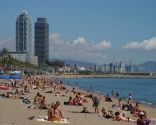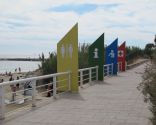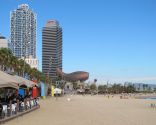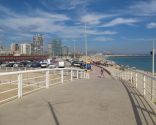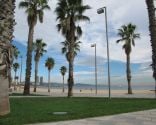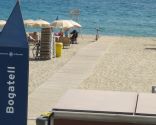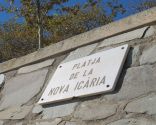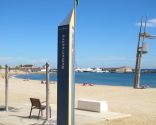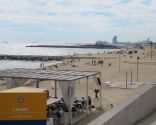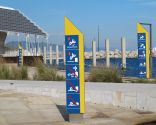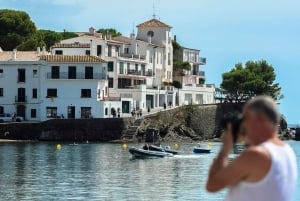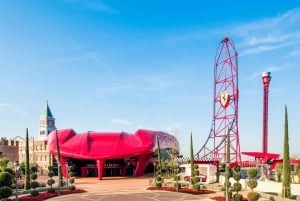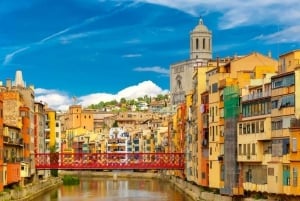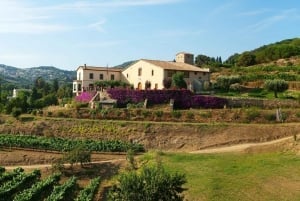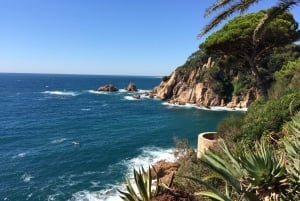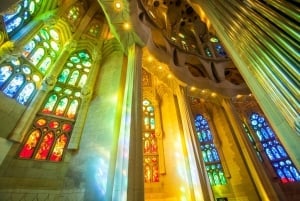Barcelona Beaches

Some of you might wonder whether you can go swimming at the beaches in Barcelona and our answer is a big yes. In rerecent years the spectacular beaches of Barcelona have become one of the city’s most popular places. Whether for sunbathing, swimming, practising
watersports or just hanging out with friends, there are all kinds of
things to do and Barcelona’s sandy beaches can be enjoyed all year round. You can spend your day chilling out on a comfortable beach chair for only 6€ and for an additional 6€ you can lounge in the shade with the hire of a beach umbrella.
Let us explain you why every beach in Barcelona is diferent from the others.
Sant Sebastià Beach
The Sant Sebastià Beach is one of the longest beaches in Barcelona and the nearest to the city, with just over a one kilometre stretch of golden sand. Apart from the Barceloneta Beach it is the oldest and most traditional beach in Barcelona, boasting many watersports clubs and is popular with both locals, particularly the inhabitants of the Ciutat Vella (old city district) and tourists. >>read more
Sant Miquel Beach
The 420 metre long Sant Miquel Beach is situated between Sant Sebastiá and Barceloneta beaches and was named after the church of Sant Miquel del Port dating from 1755. Located right next to the Plaça del Mar it is one of the most frequented beaches on the Barcelona coast. >>read more
Barceloneta Beach
After many years giving its name to the strip between Sant Miquel Beach and the Moll de Marina pier Barceloneta Beach now spans the part of the seafront between the Gas Breakwater to the Ginebra breakwater. >>read more
Somorrostro Beach
Somorrostro Beach, stretching 522 metres between the Gas Jetty and the Marina Pier, was originally where the Somorrostro shanty town was located, housing 15,000 people in poverty-stricken conditions. >>read more
Nova Icària Beach
The almost half a kilometer-long Nova Icária Beach, located between Bogatell and Barceloneta beaches is considered to be one of the city’s quietest beaches and is mainly frequented by families with children and groups of friends. >>read more
Bogatell Beach
The 720 metre-long Bogatell Beach is one of the beaches that was regenerated when the Barcelona seafront was restored during the 1990s for the Olympic Games. >>read more
Mar Bella Beach
Spanning 512 metres to the East of the Barcelona coastline, this beach was built after the coastal redevelopment as a result of the 1992 Olympic Games. >>read more
Nova Mar Bella Beach
Like Mar Bella Beach, the 420 metre-long Nova Mar Bella Beach is one of the beaches created when the Barcelona seafront was restored as part of the urban redevelopment for the 1992 Olympic Games. >>read more
Llevant Beach
Llevant Beach is one of the most recent beaches created on the Barcelona seafront where factories used to dominate the coastline. >>read more
Fòrum Bathing Area
The Fòrum bathing area is a new beach-concept, but without sand! Users can sunbathe or go for a swim in the specially designated swimming area. The water can be accessed down steps from a paved area. >>read more
Barcelona’s inhabitants have had a close relationship with the sea since ancient times, mainly through trade and fishing, but it has only been in recent years that the city has opened up its seafront for leisure and sporting purposes. The reconstruction of the Maritime Front initiated in the 1980’s and the building of the waterside Olympic Port, Olympic Village and beaches in preparation for the 1992 Olympic Games have both contributed to bringing the sea closer to the Barcelona locals and enticing visitors to the glorious stretches of sand.
Check our Wi-Fi Free info to know what beach areas have a wi-fi service.
For your safety when bathing, please pay careful attention to the following recommendations:

The green flag indicates that bathing is allowed and that conditions for swimming and diving are good. A yellow flag means that caution must be exercised when swimming or diving. A red flag indicates no swimming or diving is allowed. Be sure to pay attention to the lifeguards’ warnings and any announcements made via megaphone.
When swimming in the sea, do not go beyond the area marked with yellow buoys and do not swim near the jetties. Please keep out of the areas marked for the entry and exit of boats.
Entering the water is not recommended when there are jellyfish. A yellow flag will indicate this. In the case of a jellyfish sting, the sting site should be cleaned out with seawater. Do not use sand, ammonia or fresh water to clean it out. Go to the nearest lifeguard station or first aid point.
Rubbish bins must be used and take care to place each type of waste in its corresponding recycling container. Do not litter the sand with ashes or cigarette butts. The information points will supply you with beach ashtrays. Do not use soap, shampoo or detergent in the showers.
Dogs and other pets are NOT allowed on the beach during the swimming season.
In Barcelona the high season for using the beach is the summer months but you can swim all year round as the weather is normally mild even in winter. Check out the graphs and find out the water temperature for each month.
Take utmost care with personal belongings on the beach. Do not leave anything unattended, even for a couple of minutes. Thieves are rife during the summer months and we recommend keeping a constant eye on your belongings. If you are in a group it is best to take it in turns to go bathing. This is not the ideal solution, but it’s preferable to spending a summers’ day at the police station!
In case of emergency, call telephone number 112
Find here a list of signs for transport, services and information, which you can find on Barcelona's beaches.




